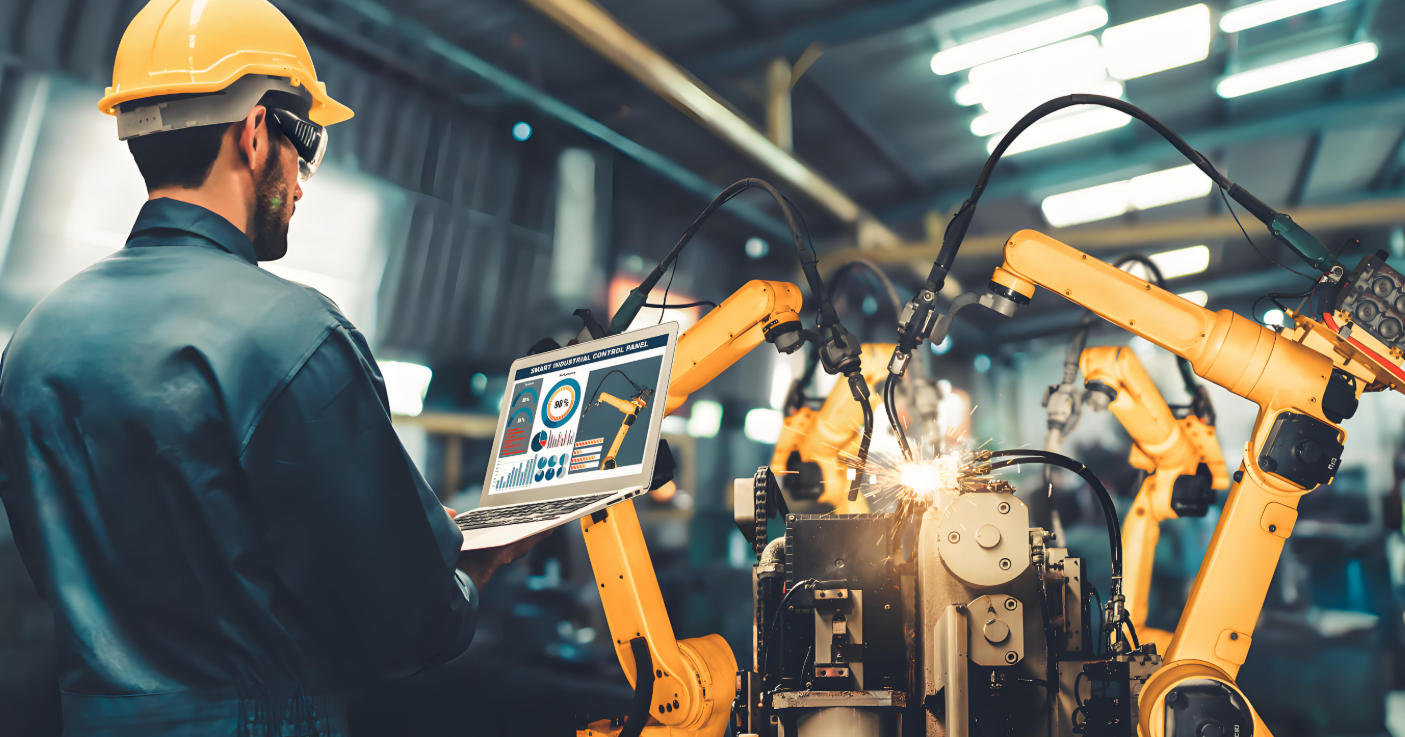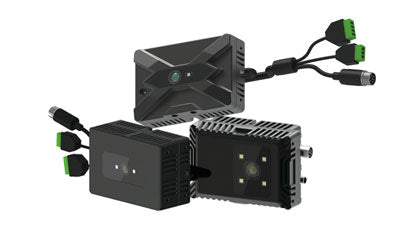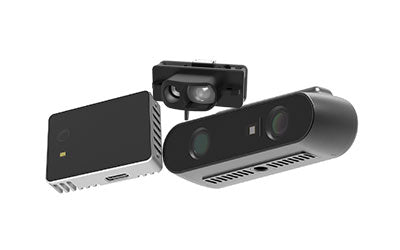From Production Line to Digital Twin:TOF’s Role in Smart Manufacturing

How Can TOF Technology Upgrade a Traditional Production Line into a Digital Twin Factory?
With the rise of Industry 4.0, the manufacturing sector is undergoing an unprecedented transformation. Traditional factories are shifting toward digitalization and intelligence, and the Digital Twin has become one of the core technologies driving this change. Widely applied in production line optimization, equipment maintenance, and decision-making, Digital Twin technology enables enterprises to bridge the gap between the physical and virtual worlds. At the same time, the TOF (Time-of-Flight) camera (https://en.wikipedia.org), with its high-precision 3D modeling capability, has become a key data source for digital twins, accelerating the upgrade and implementation of smart manufacturing.
What is Meant by Digital Twin?
A Digital Twin refers to creating a digital model in a virtual environment that corresponds to a real-world entity—such as equipment, factories, cities, or even the human body. By integrating real-time data, sensor input, and algorithms, this virtual model can accurately reflect, simulate, and predict the operating state and lifecycle of its physical counterpart.
In simple terms, it is the 'digital mirror' of the real world.
🔑 Key Features:
-
Real-Time Mapping – IoT devices, sensors, and data systems stream operational data into the virtual model.
-
Simulation & Prediction – Test different scenarios in a digital environment to forecast performance, lifespan, or potential faults.
-
Optimization & Decision Support – Reduce costs and improve efficiency in manufacturing, maintenance, and management.
-
Cross-Industry Applications – Already widely adopted in smart manufacturing, aerospace, healthcare, energy management, and smart cities.
🌟 Example:
A wind turbine’s digital twin can display real-time operating data (such as rotational speed, temperature, or wear). Engineers can use this virtual model to predict faults, schedule maintenance, and optimize future designs.
1. The Concept and Importance of Digital Twins
Originating in aerospace and aviation engineering, the Digital Twin has become a central concept in smart manufacturing and the Industry 4.0 framework. Its essence lies in building a virtual replica of a physical entity and continuously synchronizing it with real-time operational data. Unlike static 3D models or CAD drawings, a digital twin is a dynamic system that evolves with time, data, and environment.
In manufacturing, this means enterprises can monitor real processes in real time, conduct predictive analysis, and make forward-looking decisions without costly trial-and-error.
Key advantages in smart manufacturing include:
-
Real-Time Mapping – Using IoT sensors, TOF imaging, and industrial big data, digital twins can visualize machine health, production flow, and operator behavior in real time.
-
Optimized Decision-Making – By combining real-time and historical data, digital twins can predict equipment failures, optimize workflows, plan capacity, and simulate production strategies.
-
Cost Reduction & Efficiency Gains – Virtual simulations allow manufacturers to test process changes, optimize takt times, or introduce new products without costly downtime or waste.
As Industry 4.0 deepens, the digital twin is evolving into a foundational digital infrastructure. It builds a closed loop between the physical world, data world, and virtual world, enabling manufacturing enterprises to achieve greater agility, adaptability, and sustainability.
2. How TOF Provides High-Precision Data for Digital Twins
The value of a digital twin depends on the accuracy and timeliness of its data inputs. Traditional data acquisition methods—such as 2D cameras or laser scanners—often suffer from limitations: poor adaptability to lighting conditions, slow modeling speed, or insufficient support for real-time updates.
This is where the TOF (Time-of-Flight) camera becomes critical. By emitting light pulses and measuring their return time, TOF sensors capture precise 3D depth data at millisecond-level speed, generating highly accurate point clouds. This makes them ideal for complex industrial environments where both precision and real-time performance are required.
-
Real-Time 3D Modeling – TOF technology allows rapid scanning of parts, machinery, and production environments, generating detailed 3D models that serve as the spatial foundation of digital twins.
-
Dynamic Data Updates – Production processes are constantly changing. TOF cameras continuously monitor equipment states, part positions, and operator actions, feeding real-time data into the digital twin platform to ensure synchronization.
-
Production Optimization – TOF data analysis helps identify process deviations and potential risks early. For example, in assembly, TOF can confirm parts are correctly positioned; in quality inspection, it can detect dimensional errors to reduce scrap rates.
In essence, TOF acts as the 'sensory layer' of the digital twin, bridging the physical and virtual factory. It transforms digital twins from static models into dynamic, interactive platforms, powering the upgrade to smart manufacturing and accelerating Industry 4.0 adoption.
3. Application Case: Automotive Manufacturing
In automotive production, where vehicles are assembled from tens of thousands of parts, assembly precision and process efficiency are critical. Relying solely on manual inspection or 2D vision often results in errors and inefficiencies.
-
Part Positioning & Alignment – TOF cameras capture real-time 3D coordinates, enabling robotic arms to install components with high precision, reducing assembly errors.
-
Virtual Assembly Simulation – Through digital twins, manufacturers can simulate entire assembly workflows in a virtual factory, verifying feasibility, detecting interference, and resolving potential conflicts before physical production.
-
Shortened R&D Cycles – For new vehicle models, TOF-based 3D modeling enables rapid validation of design changes, reducing reliance on costly physical prototypes and accelerating time-to-market.
By combining TOF with digital twin technology, automotive manufacturers achieve higher accuracy, efficiency, and flexibility—allowing them to respond faster to market demands and embrace true smart manufacturing.
Precision Electronics Industry: High-Accuracy Production and Quality Assurance
In semiconductor and consumer electronics manufacturing, process precision often reaches the micrometer or even nanometer level. Even the slightest deviation can result in defective products. The combination of TOF cameras and digital twins provides a highly reliable solution for this sector.
-
Micrometer-Level 3D Modeling – TOF technology can capture the fine geometric details of chips, PCBs, and components, providing high-precision input for digital twins and ensuring that production processes are fully validated in a virtual environment.
-
Welding and Assembly Optimization – During precision welding and micro-assembly, TOF cameras can detect positional deviations in real time, guiding robotic systems to make dynamic corrections and improve yield rates.
-
Quality Control and Defect Detection – Integrated with a digital twin system, TOF enables rapid identification of defects during production and traceability back to the root cause, helping reduce scrap rates and rework costs.
Through these applications, precision electronics manufacturers can maintain high production capacity while ensuring exceptional quality, moving closer to the goal of zero-defect manufacturing.
Value Summary
These cases clearly demonstrate that the application of TOF digital twins goes far beyond theoretical concepts—it is already creating tangible value in real-world production:
-
Increasing efficiency and reducing labor dependency
-
Improving product quality while minimizing rework and scrap
-
Shortening R&D cycles and accelerating time-to-market
-
Optimizing resource utilization and enhancing overall economic performance
In short, the deep integration of TOF and digital twin technology is becoming a driving force in smart manufacturing transformation, giving enterprises across industries a significant competitive advantage.
4. Technical Integration and Challenges
Although TOF technology shows enormous potential in smart manufacturing, large-scale implementation in real production environments still faces multiple challenges. These challenges involve not only hardware-software compatibility but also system integration and standardization across the Industry 4.0 ecosystem.
-
Data Standardization Issues
TOF cameras, industrial sensors, and automation devices from different vendors often produce data in varying formats, accuracy ranges, and interface protocols. Without standardized data models, digital twin construction may suffer from data loss, compatibility issues, or reduced modeling accuracy. To unlock the full potential of TOF-driven digital twins, industry-wide standards are needed to ensure seamless interoperability across devices and platforms. -
Interface Development Complexity
In industrial production, systems such as PLM (Product Lifecycle Management), MES (Manufacturing Execution Systems), and ERP (Enterprise Resource Planning) each play vital roles. Integrating TOF-generated 3D modeling data into these systems is a complex task involving data formatting, communication protocols, cybersecurity, and real-time requirements. Poor integration risks creating “data silos,” reducing the effectiveness of digital twins. -
Computational Power and Real-Time Demands
Continuous collection of high-precision 3D data from TOF cameras often results in petabyte-scale industrial datasets. This requires enormous computing power. Without sufficient processing capability, real-time digital twin updates may be delayed, limiting their effectiveness for smart manufacturing. To address this, integration of edge computing, GPU acceleration, and cloud computing will become increasingly essential. -
Networking and Security Risks
In highly connected Industry 4.0 environments, TOF data flows through industrial IoT networks to digital twin platforms. This exposes enterprises to potential threats such as data leaks, cyberattacks, and unauthorized tampering. Without strong cybersecurity measures, businesses may face significant operational and financial risks. Ensuring both data fluidity and security will remain a long-term challenge.
In summary, achieving deep integration between TOF and digital twins requires not only advances in hardware performance and data processing but also breakthroughs in software standardization, interface protocols, and network security. Only by addressing these challenges can TOF truly serve as the 'eyes' of Industry 4.0, unlocking the full potential of digital twins.
5. Future Outlook
With the rapid development of artificial intelligence, edge computing, and 5G communication, the combination of TOF and digital twin technology will demonstrate even greater capabilities and broader applications. This evolution reflects not only the inevitability of smart manufacturing but also the continued advancement of Industry 4.0.
-
Full-Stack Smart Manufacturing
Future smart factories will apply digital twins not only to production but across the entire product lifecycle—from design, prototyping, and execution to quality inspection and after-sales service. By combining TOF-based 3D modeling and real-time data collection, enterprises can build high-precision digital twins during the R&D stage and continuously update them throughout production and service. This will shorten time-to-market, reduce maintenance costs, and enhance customer satisfaction. -
Adaptive Factories
With TOF’s real-time sensing and AI-driven learning, factories of the future will evolve into self-learning, self-adjusting systems rather than passive production lines. For example, when market demand shifts, the factory can automatically adapt production schedules, optimize material flow, and dynamically coordinate human-robot collaboration. This enables flexible, large-scale customized production—an advanced form of digital twin-driven smart manufacturing. -
Cross-Industry Expansion
While TOF digital twins are leading transformation in manufacturing, their potential extends far beyond. In logistics, TOF enables real-time 3D warehouse mapping and optimized automated sorting. In energy, it supports equipment condition monitoring and remote maintenance. In construction and urban management, TOF combined with digital twins powers smart site management, infrastructure monitoring, and even city-scale digital twin development. These cross-industry applications will further drive digital transformation and deliver significant economic and social value.
Looking ahead, as computing power grows, algorithms improve, and industry standards mature, TOF will emerge as a core sensing technology of Industry 4.0, playing an increasingly vital role in the digital twin ecosystem. It will not only bridge the physical and virtual worlds but also become a cornerstone of intelligent, flexible, and sustainable industrial development worldwide.
Conclusion
From production lines to digital twins, TOF technology is injecting new vitality into smart manufacturing. With its high-precision 3D modeling and real-time data capabilities, TOF not only boosts efficiency and quality but also empowers enterprises with more scientific decision-making tools. In the era of Industry 4.0, TOF-powered digital twins will continue to drive the next wave of industrial upgrades.
Synexens 3D Camera Of ToF Sensor Soild-State Lidar_CS20
After-sales Support:
Our professional technical team specializing in 3D camera ranging is ready to assist you at any time. Whether you encounter any issues with your TOF camera after purchase or need clarification on TOF technology, feel free to contact us anytime. We are committed to providing high-quality technical after-sales service and user experience, ensuring your peace of mind in both shopping and using our products






